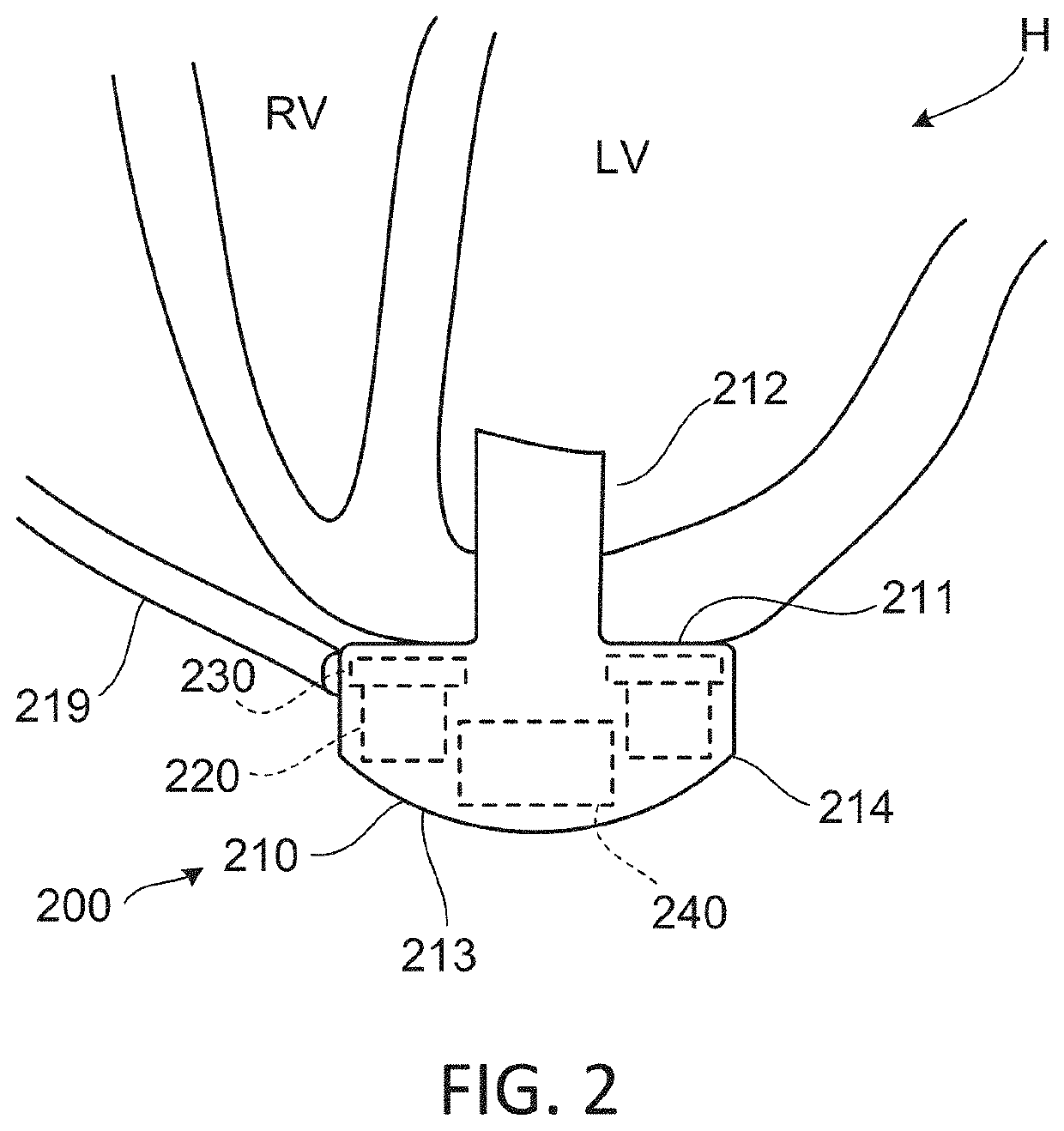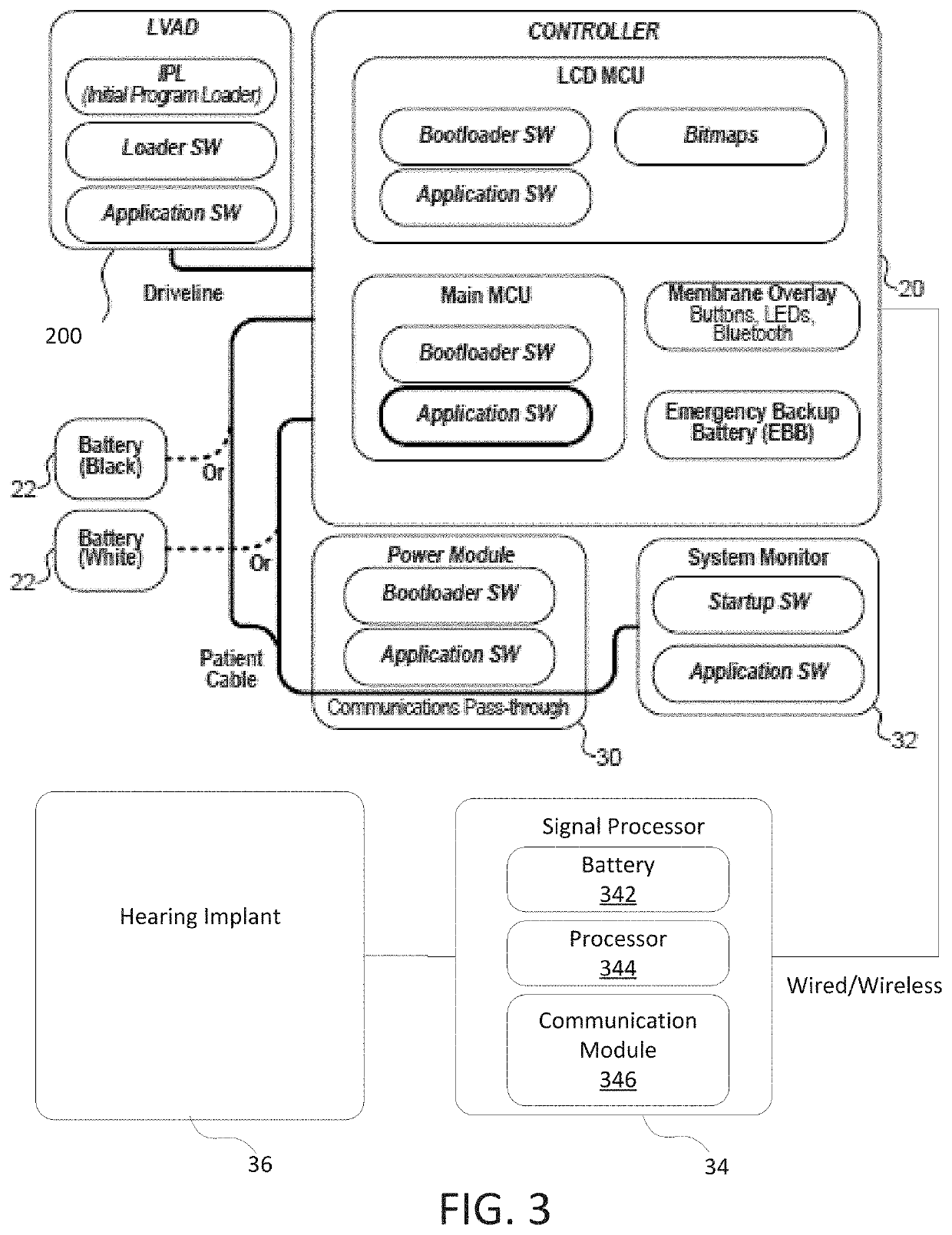Methods and systems for bone conduction audible alarms for mechanical circulatory support systems
a technology of mechanical circulatory support system and bone conduction, which is applied in the direction of prosthesis, instruments, other medical devices, etc., can solve the problems of excessively low voltage and excessively low speed of the circulatory support system, and achieve the effect of improving the ability of the patient and easy detection of the alarm
- Summary
- Abstract
- Description
- Claims
- Application Information
AI Technical Summary
Benefits of technology
Problems solved by technology
Method used
Image
Examples
Embodiment Construction
[0034]Aspects of the present disclosure relate to improved methods and systems for alarm transmissions, particularly in relation to mechanical circulatory support systems. For example, patients who have diminished hearing can now easily discern alarms emitted from their mechanical circulatory support system. In particular, the present invention provides for a signal processor coupled to a hearing implant worn by a patient which is configured to transmit select alarm signals based on inaudible alarm signals emitted from the mechanical support system to an inner ear of the patient via bone conduction or other pathways that improve the ability of the patient to audibly perceive the alarm. This invention further allows for effective alarm transmission in loud ambient environments and even in quiet environments without alerting others of the alarm transmission.
[0035]In the following description, various embodiments of the present invention will be described. For purposes of explanation, ...
PUM
 Login to View More
Login to View More Abstract
Description
Claims
Application Information
 Login to View More
Login to View More - R&D
- Intellectual Property
- Life Sciences
- Materials
- Tech Scout
- Unparalleled Data Quality
- Higher Quality Content
- 60% Fewer Hallucinations
Browse by: Latest US Patents, China's latest patents, Technical Efficacy Thesaurus, Application Domain, Technology Topic, Popular Technical Reports.
© 2025 PatSnap. All rights reserved.Legal|Privacy policy|Modern Slavery Act Transparency Statement|Sitemap|About US| Contact US: help@patsnap.com



